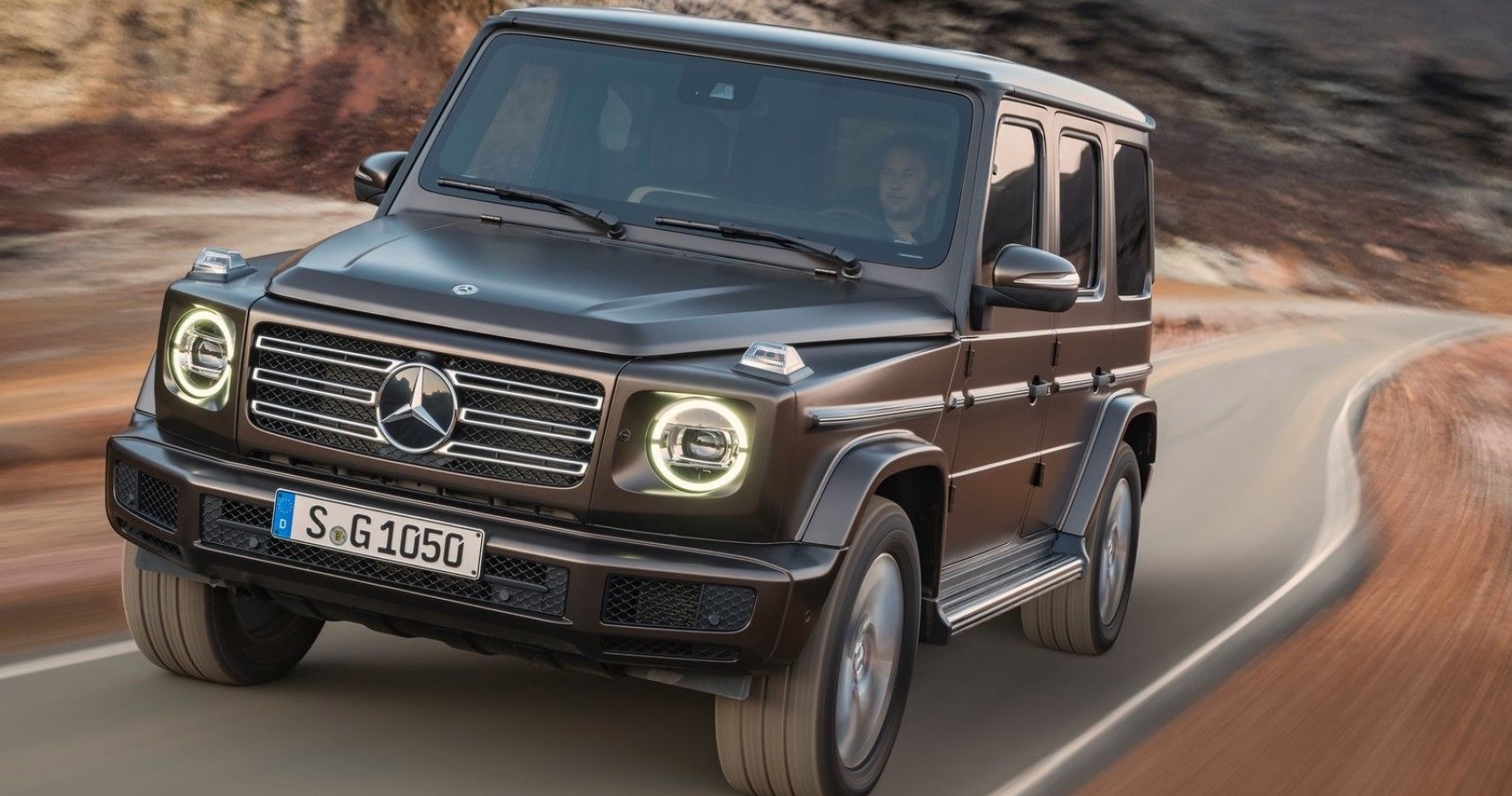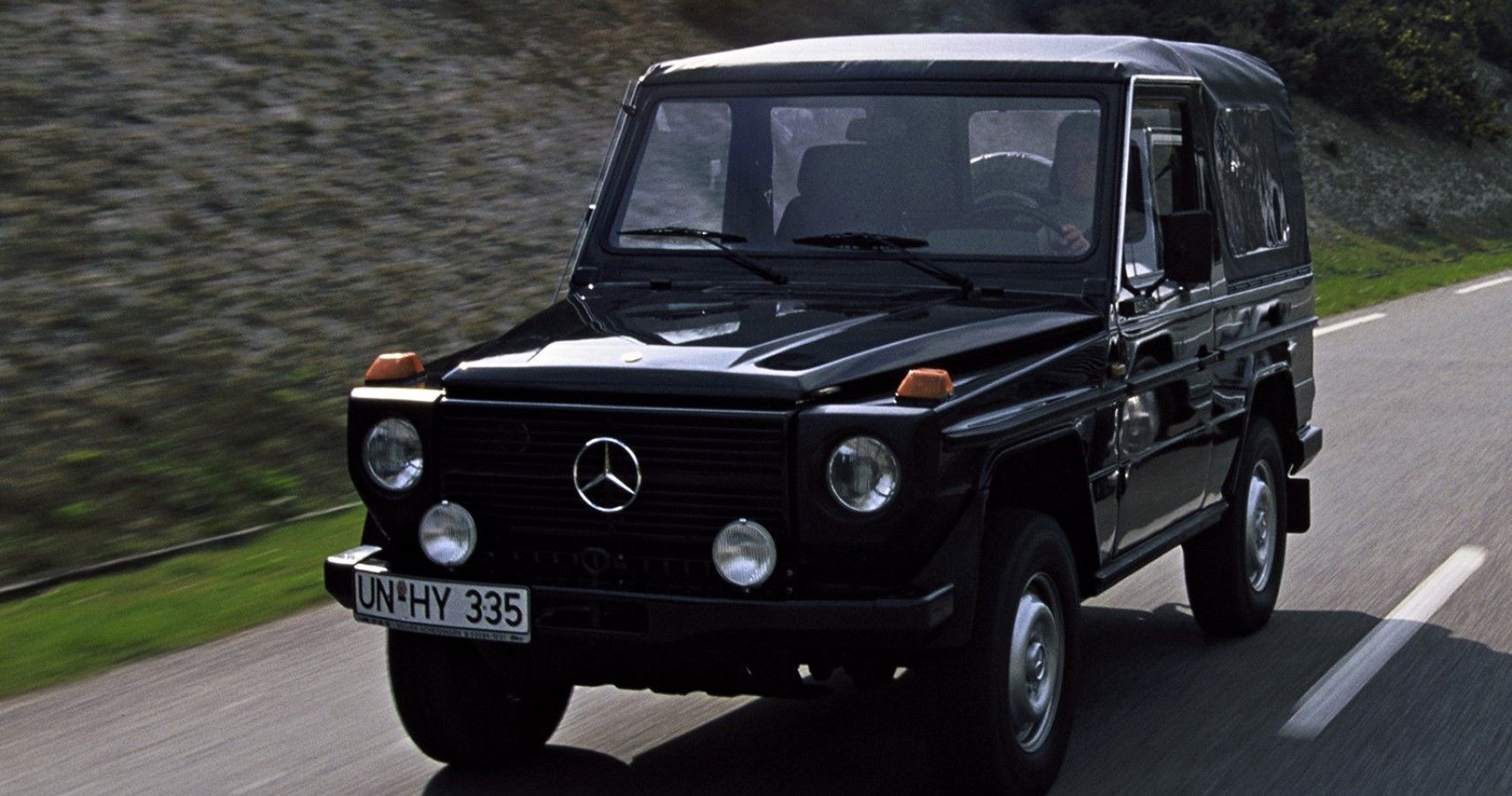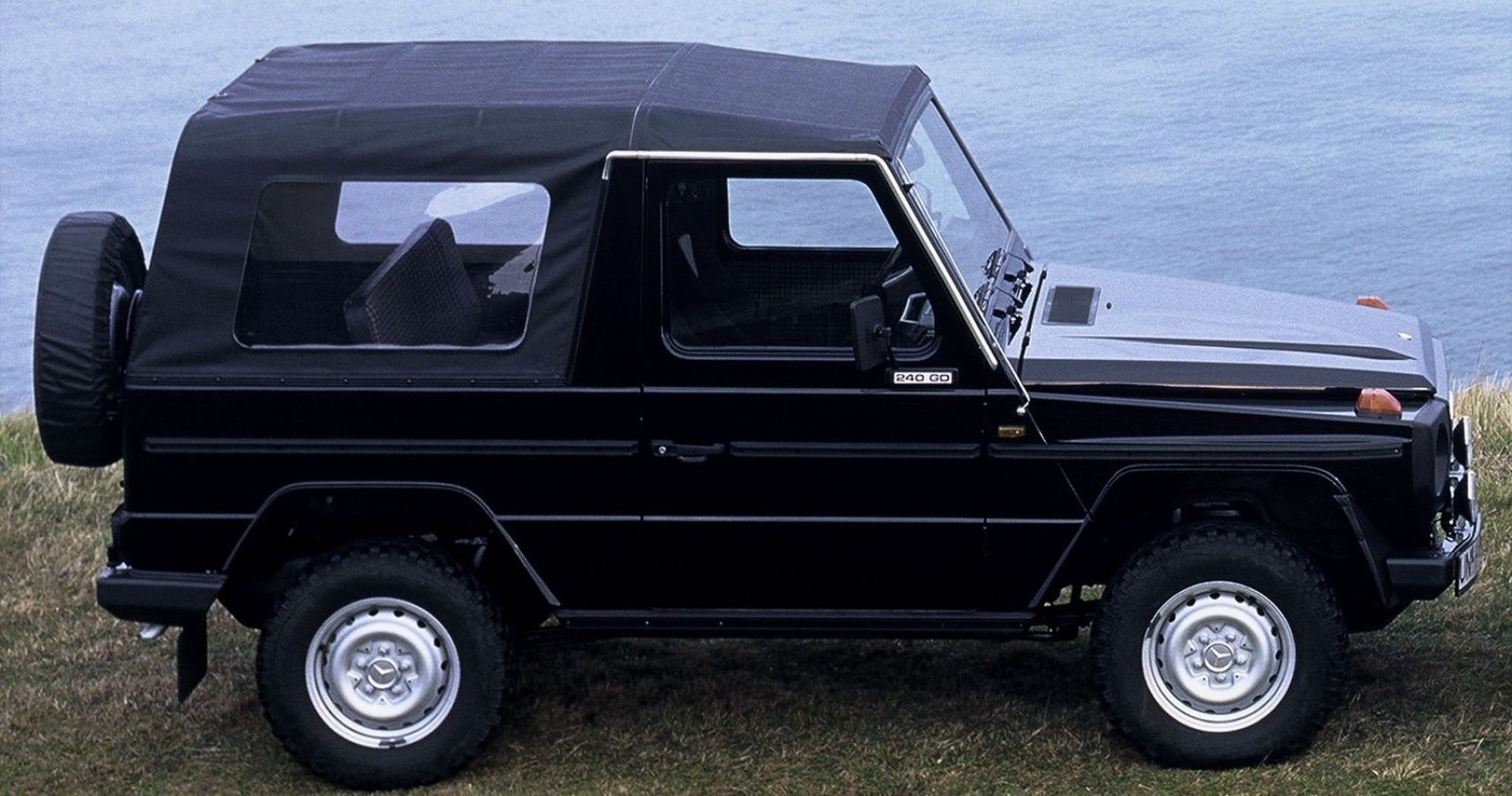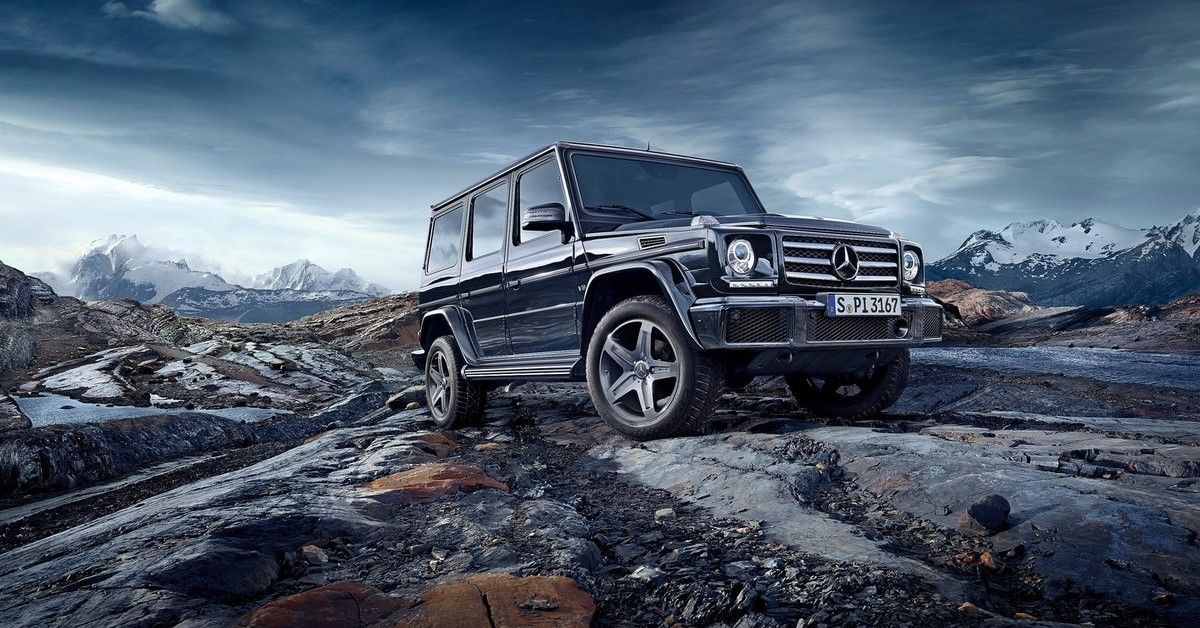The Mercedes-Benz G-Wagon, short for Geländewagen, or "terrain vehicle" in English, has been around for a long time, much longer than most people would care to guess. Mercedes-Benz started developing the model in the early 1970s as a military vehicle from a suggestion by the Shah of Iran, who was a significant Mercedes shareholder back then.
In 1979, the first civilian model was offered to the public, and its design would go largely unchanged for 40 years. What started as a fairly basic all-terrain, the four-wheel-drive military vehicle ended up becoming a prestigious, luxurious status symbol that now costs a whopping six figures. For decades, the G-Wagon has been in high demand all over the world, from the Middle East to Germany, from military use to the Pope's collection.
It finally got an extreme makeover back in 2018 that gave it a slightly more modern look, but mainly emphasized interior comfort, safety, and technology, further cementing its status as the most badass luxury SUV. The 2022 Mercedes-Benz G Class is priced from $131,750, and the sportier AMG version starts from $156,450. Read on to learn about the 'rough to riches' journey that made the Mercedes-Benz G-Wagon pack a premium appeal.
Updated July 2022: We've updated this article with the latest information about the Mercedes-Benz G-Wagon; and how it justifies its six-figure price tag. Also, we give you an insight into the more premium all-electric future of the G-Class and how its price will be well worth it.
The G-Wagon: A 1970s Inception That Is Still Going Strong
The G-Wagon is part of the Mercedes G-Class, and its story began in 1972. Upon its inception, the goal was to create a vehicle that was reliable, user-friendly, capable, and rugged with four-wheel drive. Further, all of these features needed to work on a platform that could be comfortable anywhere from a war zone to the morning commute, in sunny weather and snowy weather.
From the early designs, the G-Wagon would evolve into a status symbol, thanks in part to creative marketing, appealing aesthetic design, and limited production manipulating the supply and demand curves. The G-Class would go on to inspire similar vehicles to become status symbols, despite beginnings born out of practicality and functionality.
It took nearly 40 years before the G-Wagon received a significant redesign, although it did get some updates along the way. Perhaps it's the lack of design changes that led to many owners customizing their G-Wagons?.
Rich History Adds Flavour And Value To The G-Class
The idea for the G-Wagon's predecessors came directly following World War II. It all began shortly after the war when a former Mercedes-Benz engineer dreamed up an all-terrain civilian vehicle with all-wheel drive. Before the G-Class, there was the Unimog, an acronym that meant “Universal Motor Gerät,“ Gerät being the German word for a piece of equipment or a device.
Unimog production started in 1948 at Boehringer in Göppingen, Germany. The success of this concept inspired Mercedes-Benz to buy the company making Unimogs in 1951 and put their spin on the idea shortly thereafter, using variations of the design for tasks such as snow plowing and ambulances. The Unimog was sold under the Mercedes-Benz brand in 1951, but it didn't wear the three-pointed Mercedes-Benz star until 1953.
Once the G-Class officially arrived in the 1970s, things began to evolve further. There were two distinct lines of G-Class in the beginning: one for military-related applications and one for civilian use. These two lines had common features such as narrow width, an appearance both fierce and attractive, and, of course, its signature four-wheel-drive.
The Steyr-Daimler-Puch (now Magna Steyr) factory in Graz, Austria, was the site of production for the first G-Wagons. They were initially available in two-door convertible, two-door wagon, and four-door wagon modes. These early G-Wagons never officially came to America, but thanks to imports, a few hundred Americans were able to get their hands on one between 1979 and 1987.
The G-Wagon was so prestigious and popular that even the Pope even requested a custom model for the Vatican in 1980, so he could stand upright during meet & greets. The first major styling update was in 1990, and although it didn't forego its original utilitarian appearance, it became more civilian-friendly. This was achieved through the addition or modification of features such as leather seats, cruise control, wood trim, running boards, and anti-lock brakes.
Finally, the G-Wagons officially came to America in 1993 after being brought to U.S. standards, which was an extensive and expensive process. To compensate, the manufacturer added some digits to the price tag, which helped establish the G-Wagon's exclusivity, rarity, class, status, and prestigious reputation.
2016 Mercedes-Benz G-Class Saw A Wild Revamp
By 2016, Mercedes made the G 63 AMG 6x6 variant with more ground clearance for dune climbing, making it popular across the globe, and particularly so in the oil-rich Middle Eastern countries.
Mercedes followed this success by making the G 65 available in the United States for $225,000 apiece. This model had a 621-horsepower V12 engine. This was immediately followed by an extreme makeover in 2018, making the vehicle more elaborate, longer, more stable, more luxurious, and longer.
Value Is About To Elevate Further With Mercedes G-Class Embracing The All-Electric World With The EQG
Yes, you heard it right. The brawny military-grade SUV is going the electric route with the upcoming Mercedes-Benz EQG. It retains the iconic boxy silhouette of the G-Class, but that's also where the similarities end. It will pack four electric motors, one for each wheel.
And it will be the best off-road-performance G-Class ever with clever technology and insane torque on tap! All these features and a lot more will once again justify its pricing that will be backed by its off-roading legacy.
Source: Mercedes-Benz







